How to Choose the Right Tool Coating for Your Machining Application
Selection criteria and common coating attributes for PVD, CVD and other common coatings.
There is a vast selection of PVD (Physical Vapor Deposition), CVD (Chemical Vapor Deposition) and alternate surface treatments that are readily available from your manufacturers or coating facilities.
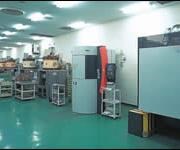
The right surface treatment on small round tools can increase overall life, decrease cycle time and promote better surface finishes. Unfortunately, choosing the right coating for your high production application can be a confusing and arduous task. Each one has advantages and disadvantages in the machining process. An improper selection can lead to less tool life than an uncoated tool and sometimes result in more problems than solutions.
This article will better associate you with some common coating attributes and some popular PVD and CVD choices.
Each one of these characteristics plays a major role in determining which treatment may be the most beneficial for an application.
Coating Characteristics
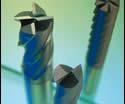
A formed layer of aluminum oxide gives Titanium Aluminum Nitride (TiAlN or AlTiN) tools better life in high-heat applications. This coating is primarily selected for carbide tooling where little to no coolant is being used.
Photo Credit: OSG USA Inc.
Hardness
A high surface hardness from your coating is one of the best ways to increase tool life. Generally speaking, the harder the material or surface, the longer the tool will last. Titanium Carbo-Nitride (TiCN) has a higher surface hardness versus that of Titanium Nitride (TiN). The addition of carbon gives TiCN 33 percent higher hardness and changes the range from about 3,000 to 4,000 Vickers, depending on the manufacturer. With a surface hardness near 9,000 Vickers, CVD diamond coatings that have been grown onto the tools show 10 to 20 times better tool life compared to PVD coatings. This is the coating of choice for production work in non-ferrous materials because of its higher hardness and its ability to run at two to three times the speed of uncoated tooling.
Wear Resistance
This is the ability of the coating to protect against abrasion. Although a material may not be hard, elements and processes added during production may aid in the breakdown of cutting edges or forming lobes.
Surface Lubricity
A high coefficient of friction causes increased heat, leading to a shorter coating life or coating failure. However, a lower coefficient of friction can greatly increase tool life. The amount of heat can be reduced by a surface that lacks coarseness or irregularities. This slick surface lets the chips slide off the face of the tool, generating less heat. A higher surface lubricity also can allow for increased speeds when compared to non-coated versions. This further wards off galling of the work material.
Oxidation Temperature
This is the point at which the treatment starts to break down. A higher oxidation temperature rating improves success in high heat applications. Although the Titanium Aluminum Nitride (TiAlN) coatings may not be as hard as TiCN at room temperature, it proves to be much more effective in applications where heat is generated. This coating holds its hardness at higher temperatures due to a layer of aluminum oxide that forms between the tool and the cutting chip. This layer transfers heat away from the tool and into the part or chip. Carbide tooling is generally run at higher speeds compared to HSS. This makes TiAlN a preferred choice when coating carbide. Drills and endmills are commonly coated with this type of PVD treatment.
Anti-Seizure
This property keeps material from depositing onto the tool by preventing less chemical reactivity between the tool and the cutting material. BUE (Built Up Edge) is very common in non-ferrous materials like aluminum or brass. BUE can lead to chipping of the tool or oversizing of the part. Once the material starts adhering to the tool, it continues to attract. In the case of machining aluminum with a forming tap, aluminum deposits grow larger after every hole. Eventually, the pitch diameter becomes so enlarged that the part becomes oversized and needs to be scrapped. A coating with increased anti-seizure properties may even be able to aid where poor coolant quality or concentration is a problem.
A high surface hardness from your coating is one of the best ways to increase tool life.
Common Coatings
• Titanium Nitride (TiN)
General purpose PVD coating that increases hardness and has a high oxidation temperature. This coating works great while cutting or forming with HSS tooling.
• Titanium Carbo-Nitride (TiCN)
The addition of carbon adds more hardness and better surface lubricity. This coating is ideal for HSS cutting tools.
• Titanium Aluminum Nitride (TiAlN or AlTiN)
A formed layer of aluminum oxide gives this tool better life in high heat applications. This coating is primarily selected for carbide tooling where little to no coolant is being used. AlTiN offers a higher surface hardness than that of TiAlN, along with different percentages of aluminum and titanium. It is another viable option in the world of HSM.
• Chromium Nitride (CrN)
The anti-seizure properties of this coating makes it preferred in situations where BUE is common. HSS or carbide cutting and forming tools will be seen with this almost invisible coating.
• Diamond
A CVD process that offers the highest performance available in non-ferrous materials. Ideal for cutting graphite, MMC (Metal Matrix Composites), high silicon aluminum and many other abrasive materials (Note: True diamond coatings should not be used while machining steels. More heat is generated while cutting steels and thus causes chemical reactions that break down the bonds that hold this coating to the tool).
Coatings for hard milling, tapping and drilling all vary and are application-specific. Also available are multi-layer coatings that chip to the next layer instead of the tooling substrate, providing a further increase in tool life.
Related Content
What You Should Consider When Purchasing Modified P20 Steel
When buying P20 steels that have been modified, moldmakers must be aware of the variations and key issues that affect delivery, cost and lead times.
Read MoreThe Ins and Outs of Hot Runner Temperature Control
A training checklist that explains the why and how of proper hot runner temperature control and system management.
Read MoreMaking Quick and Easy Kaizen Work for Your Shop
Within each person is unlimited creative potential to improve shop operations.
Read MoreRead Next
Minimal Investment In New Tooling Tech Increases Productivity, Tool Life and the Bottom Line
Having a fundamental base of the facts makes it easier to detail how some of the latest innovations in cutting tool substrates, geometries and coatings can make it easier for one’s moldmaking process to go from fast to furious.
Read MoreThe Value of the Right Cutter Carbide Material and Coating
Consider mirror-edge geometry and carbide-grade combination heat-resistant PVD coatings when trying to solve mold machining challenges.
Read MoreAccuracy and Surface-Finish Needs Drive Cutting-Tool Solutions
Cutting-tool suppliers are using advanced coatings, new thread designs, education and collaboration to help moldmakers maximize results.
Read More

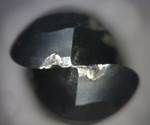
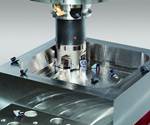











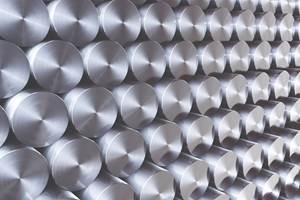



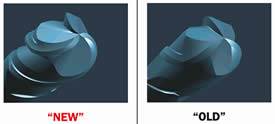
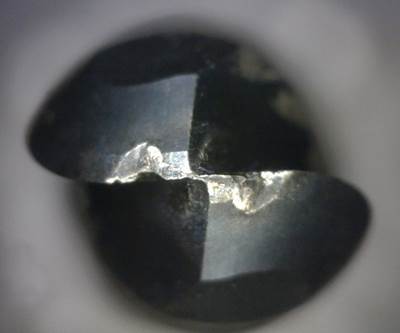
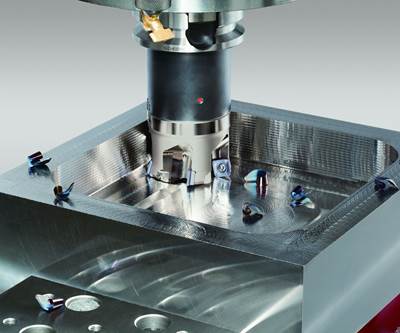
.png;maxWidth=970;quality=90)